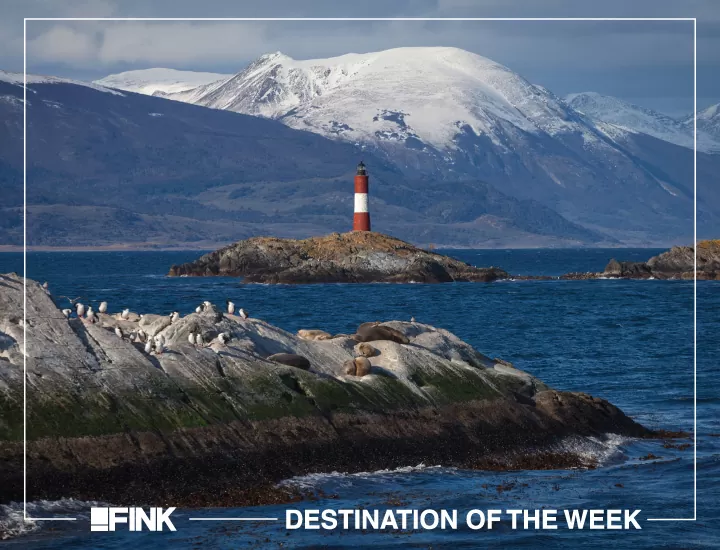
Ushuaia, seven letters that become nine words when one wants to find what they mean. Ushuaia is described as “the bay that goes deep inland towards the west”, an explanation that comes from its etymology, formed in the Yagan language by joining the words “ushu” and “waia”.
On the other hand, the marketing for the Argentinean town chose another slogan to publicize the touristic destination of those who wish to travel to a very cold place: Ciudad mas austral del mundo (southernmost city in the world, in other words, the city at the end of the world).
With a little over 100 years of existence, Ushuaia, capital of the Province of Tierra del Fuego, Antártida, e Islas del Atlantico Sur, is situated in the extreme of the South Pole, and grew slowly throughout the first half of the 20th century. Strangely enough, it formed around an imposing prison. The penal installation, now closed down, is no longer the focal point of Ushuaia, but the train that transported the prisoners became the first tour to the city. In the “Hogwarts Express” style of the Harry Potter films, the “End of the World Express” guarantees a beautiful panoramic view of the town.
Speaking of tours, the cruise ships that sail around the region are excellent options for observing penguins in ecological reserves. To visit sea lions, boat tours offer packages for friends, couples and families. The city has no fewer than 11 ecological preservation areas, many of them open to tourists, such as the Tierra del Fuego National Park, with 63 thousand hectares divided among rich exemplars of the region’s typical flora and fauna. Other places to visit are the archeological sites of the Provincial Reserve of the Isla de los Estados, with its imposing national monument, the San Juan del Salvamento Lighthouse. Also visit the Corazón de la Isla Reserve and the Playa Larga Cultural-Natural Reserve, created to protect the diverse archeological sites declared in the Cultural Patrimony of the Province.
The cold, humid climate of Ushuaia is tempered by the sea, and, according to the Koppen-Geiger classification, is defined as Tundra Glacial (ET), with an annual average temperature of 4.7⁰C. In January, the temperature reaches 10⁰C, attracting tourists from all over the world, when, curiously, although the sun sets around 5:30 pm, the darkness is not complete, since the Ushuaia sky keeps a weak penumbra on the southern side. This time of the year is excellent for tours on foot or on vehicles that lead to beautiful landscapes and trails, as well as horseback tours, cycle tourism, trekking, skiing, safaris, and even defying the low temperature by diving and canoeing.
Ushuaia, in spite of its short history, is well organized and has diverse and attractive monuments and museums. The Ushuaia Free Zone is a great option for those who enjoy shopping free of high taxes, and it offers typical regional products, such as jams, chocolates and handicrafts. As for food, Ushuaiense gastronomy holds a place of its own. Do not miss tasting the delicious national dishes: a large crab, called centolla, trout and other seafood. If you don’t like seafood, your option is the famous Patagonia roast lamb.











